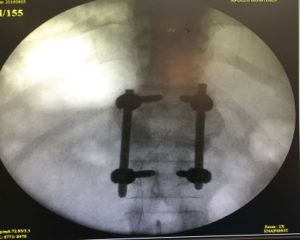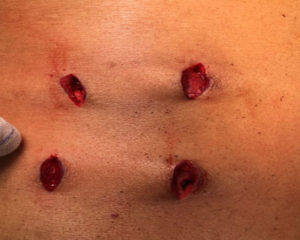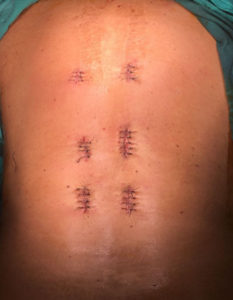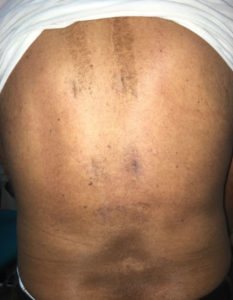
Minimally Invasive Spine Surgery (MISS) means operating on spine using the smallest incision and exposure possible. Dr Anurag Saxena is pioneer in the use of minimally invasive techniques in spine surgery in central India and uses them on virtually all his patients. This allows less pain, fewer complications and faster recovery from the surgery. Many Patient can even go home the day of their operation.
Dr Anurag Saxena has been practicing and teaching minimally invasive spine surgery techniques for many years. He has done his Fellowship in spinal Surgery from prestigious Royal Preston Hospital, which is one of the leading centres for MISS in UK. He routinely uses minimally invasive techniques and percutaneous approaches for all patients in whom it is suitable. However, in some cases, a person’s condition makes keyhole spine surgery impossible. This is discussed with each patient on an individual basis at the time of consultation.
Minimally Invasive Spine Surgery helps to minimise post-operative pain, minimal, no or minimal blood loss and allows patients to be discharged from hospital earlier, and return to their normal activities much sooner as compared to conventional spinal surgery because there is less disruption to the spinal muscles.
Performed with help of x-ray and stereotactic navigation guidance we are able to make very small incisions to gain access to the spine as compared to big cuts in conventional spine surgery . Special instruments, endoscope and microscope are used to perform this surgeries.
Minimally invasive spine surgery can range from decompressions, discectomies, spinal tumor removal through to multi-level instrumented spine fusions and corrective reconstruction.
Special Techniques
Lumbar decompression and fusion are done using a specialised minimally invasive technique in most cases. The aim is to reduce disruption to the normal tissues and allow a more rapid return to normal function.
The goals of the surgery remain the same – i.e. to decompress the affected nerves and spinal cord and to fuse or replace the bony spine but with minimal disruption of normal anatomy
Because of the inaccessibility of the spine, traditional spine operations involve exposing and pulling back skin, muscles and ligaments. This retraction can hamper recovery by causing pain and swelling.
Minimally invasive spine procedures require less exposure and retraction in order to conduct the surgery. Minimally invasive spine fusions allow surgeons to place titanium hardware through a narrow path that is created by separating muscles rather than cutting and retracting. Most patients can return back to their routine lifestyle within few days which is not possible with conventional techniques.
Conditions suitable for MISS
The following spinal conditions are suitable for MISS techniques:
- Cervical and lumbar herniated discs
- Degenerative scoliosis
- Cervical and lumbar spinal stenosis and lateral recess stenosis
- Spondylolisthesis
- Vertebral fractures
- Spinal trauma
With techniques evolving rapidly, almost all surgical problems of spine can be dealt with MISS in most cases




